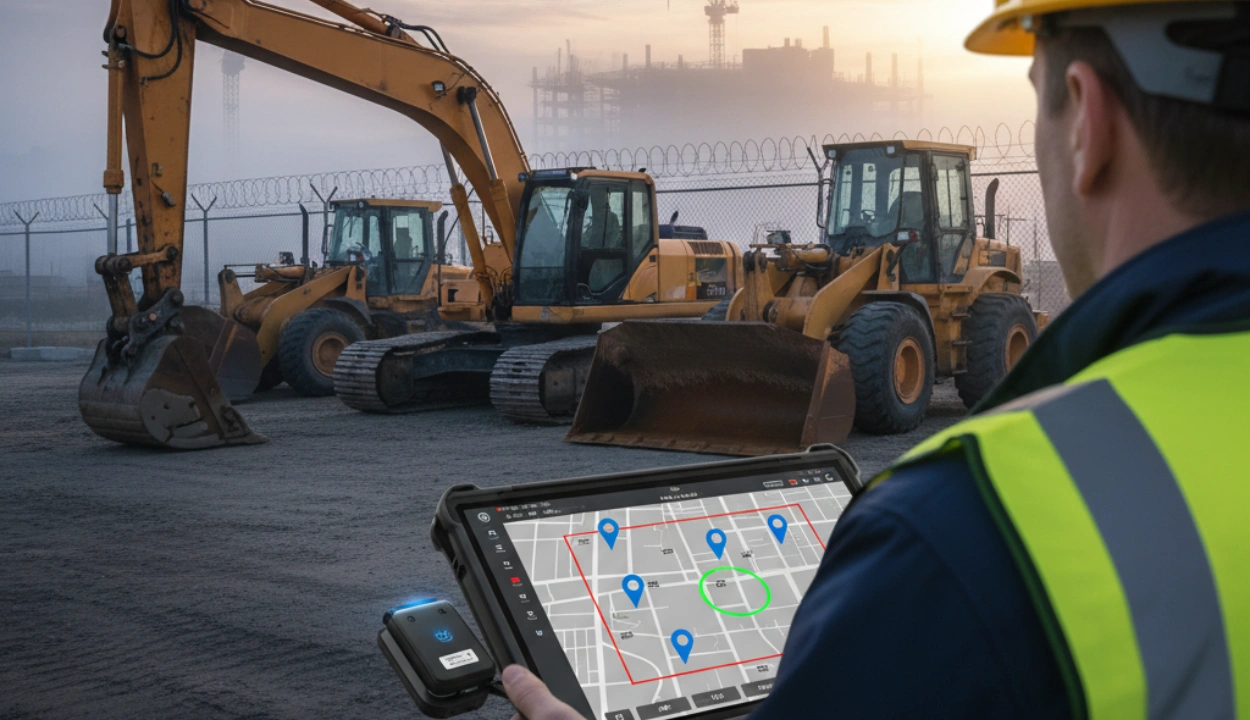Strategic Decision-Making Based on Construction Equipment Reports
Mastering the art of decision-making is essential for any construction leader. You want to make the best and most profitable decisions.
Reporting in construction plays a vital role in this regard. Construction equipment reports are indispensable for decision-making and strategic planning.
Project and construction managers can use the findings of these reports to change equipment utilization, planning procedures, and overhead costs.
How? Let’s find out together.
Importance of Construction Equipment Reports
Reporting in construction is essential in every aspect of the project, but there are areas where project managers can benefit more from having concise reports.
These areas include:
Asset Tracking
Reporting allows project managers to access reports on the use of physical properties, providing real-time data on construction asset tracking in time and how the asset was implemented.
With this data, project managers and fleet management teams can optimize asset utilization, reduce idle time, and plan maintenance tasks.
It also empowers them to make equipment deployment and allocation decisions in one go and have all needed resources available in the right place at the right time, suitable for project activities.
Construction Equipment Maintenance
Maintenance is essential to reduce equipment downtime and life expectancy and provide operational readiness.
Construction equipment maintenance software reports record critical information on equipment performance, maintenance schedules, and repair history.
This makes you more advanced with the maintenance strategies for your equipment. It helps you recognize and highlight potential problems in advance and plan preventative maintenance around them.
By following proper equipment maintenance schedules, project managers can minimize unplanned downtime, reduce repair costs, and prolong the lifespan of equipment.
Construction Equipment Management
Construction equipment reports streamline equipment management processes by providing detailed records of equipment utilization, operators, and maintenance history.
This information allows project managers to track equipment performance, monitor productivity, and optimize resource allocation.
Project managers can ensure optimal resource utilization, reduce idle time, and minimize operational costs by analyzing usage patterns and identifying opportunities to improve efficiency.
Another critical point is that equipment records enable better decision-making regarding equipment acquisition, rental, or disposal, ensuring that project teams have the right equipment to meet project requirements.
Types of Construction Equipment Reports
Reporting in construction can take various forms, from daily monitor reports to financial and risk assessment reports.
You can check out some of the vital construction equipment reports here.
Project Status Reports
A project status report offers a comprehensive overview of project progress, including milestones achieved, equipment deployed, and upcoming tasks.
It clearly explains project status to stakeholders, highlights any issues or delays, and outlines plans for addressing them.
The primary purpose of this kind of report is to help project managers explain to the stakeholders how the project is progressing.
This report also shows areas where delays or potential issues might occur, which are essential for stakeholder knowledge.
Daily Progress Report
A daily progress report provides a snapshot of daily activities, including work completed, issues encountered, and equipment usage.
It helps project teams track daily progress, identify potential bottlenecks, and make real-time adjustments to optimize productivity and efficiency.
The main purpose of this report is to help the workers and managers understand how the project is progressing.
Another purpose of this report is to highlight possible issues and risks due to the real-time data.
This is very helpful for project managers in addressing any risks or hazards.
Weekly/Monthly Updates
Weekly or monthly updates summarize progress over a specific period, highlighting key achievements, challenges, and upcoming milestones.
These reports give stakeholders a high-level overview of project performance and facilitate team communication and collaboration.
Milestone Reports
Milestone reports focus on significant project milestones, detailing accomplishments and outlining future objectives.
They help project teams track progress toward key project milestones, celebrate achievements, and identify any deviations from the project plan that may impact project timelines or budgets.
Safety Report
A safety report documents safety incidents, measures implemented, and compliance with safety regulations, ensuring a safe working environment.
It helps project teams identify potential safety hazards, implement corrective actions, and prioritize worker safety.
You want your workplace to be safe; this is why this report detailing every inspection done before and after the start of the project is essential.
This report details all of the safety measures and compliances taken and highlights any potential safety issues that can cause delays or problems in the future.
Quality Control Report
A quality control report tracks quality control measures, inspections conducted, deviations from quality standards, and adherence to project specifications.
It helps project teams identify and address quality issues early, ensuring project deliverables meet client expectations.
Quality assurance and control are significant in construction. Poor quality control can lead to customer dissatisfaction and cause substantial incidents.
This report is critical to ensure that all the necessary quality checks are conducted regularly.
Financial Reports
Financial reports offer insights into project expenditures, budget allocation, and projections, facilitating cost management and financial planning.
They help project managers track project expenses, identify cost-saving opportunities, and ensure that projects are completed within budget.
Financial reports are among the most common yet important reports in any industry.
They help project managers clearly see the project's finances and the resources they can purchase to stay within budget.
Payroll Reports
Payroll reports record labor costs, hours worked, and payroll information, aiding workforce management and budgeting.
They help project managers track labor costs, monitor productivity, and ensure compliance with labor regulations.
Payrolls are essential for ensuring that all workers are compensated for their work and are also quite helpful for determining working hours and labor status.
Equipment Utilization Reports
Equipment utilization reports analyze usage patterns, downtime, and efficiency metrics, optimizing resource allocation and fleet management strategies.
They help project managers identify underutilized equipment, improve productivity, and reduce operational costs.
Critical Components of Effective Reports
While many construction equipment managers can create construction reports, only a few can make effective reports.
If you are also trying to figure out what to include in your reports. Here is a brief look at the critical components that should be included in effective reports.
Give a Project Overview and Goals
Clearly define project objectives, scope, and deliverables to provide context for the report and ensure that stakeholders understand the project's purpose and objectives.
You want your report to be understandable and highlight all the essential aspects of the construction project for the stakeholders.
Provide Progress Updates and Milestones
Your reports should highlight all the important updates and milestones of the project.
This will help the stakeholders understand how you are progressing with the project and what they can expect shortly.
This will highlight achievements, challenges, and upcoming milestones to track project advancement and keep stakeholders informed of project progress.
Create a Budget and Financial Data
Your report should include budget allocations, expenditures, and forecasts. This helps you ensure financial transparency and accountability throughout the project.
These also enable stakeholders to make informed decisions regarding project finances, as they are provided with all the financial and budgetary data in one place.
Budgets are an important aspect of any report as they are mainly used by stakeholders to decide whether or not the project is viable and should be invested in.
Conduct a Risk Assessment and create Mitigation Strategies
Before creating any report, be sure to have all the necessary data, especially risk assessment.
Start by identifying potential risks, assessing their impact, and outlining mitigation measures to minimize disruptions and ensure project success.
Your report should include all the proper data to help stakeholders understand the importance of the possible risks and how they can impact the project.
Apply Quality Control and Compliance Measures
Document quality control procedures, compliance with regulations, and actions to address deviations to ensure project deliverables meet quality standards and client expectations.
Your report should detail all the quality controls you will be taking throughout the project; this will help your clients and stakeholders know that you are compliant with all the regulations of your jurisdiction.
Provide Safety Records and Incident Reports
Document safety incidents, near misses, and corrective actions to prioritize worker safety and create a safe working environment.
This will help your stakeholders know about any incidents or safety measures they must know.
This will also help you ensure that you comply with all the rules and regulations of the industry and your jurisdiction.
Grab Attention with Visual Aids and Data Visualization
Utilize charts, graphs, and diagrams to present visually appealing and understandable data.
This will help stakeholders understand complex information and trends. Graphs are a great way to get your point across without overwhelming the reader with a block of content explaining the context.
Provide an Executive Summary
Provide a concise overview of key findings, recommendations, and action plans so that stakeholders can grasp the report's main points quickly.
Sometimes, reports can be too long to skim through, which is where an executive summary comes in. This summary features all the report's essential points without completing the report.
Give Recommendations and Action Plans
Propose actionable recommendations based on the report findings to drive continuous improvement and address challenges.
This ensures that stakeholders can take appropriate actions to achieve project success. Recommendations are a great way to highlight where the project may be lacking and where possible steps can be taken to make the project more cohesive and successful.
Provide Appendices and Supporting Documents
Include additional information, such as detailed data tables or regulatory documents, to support the report findings and provide stakeholders with relevant information.
Support documents are a great way to make reports more cohesive and non-text-heavy. You can easily add a reference to the support documents in the report so the stakeholders who are interested in checking it out can refer to them.
Utilizing Reports for Strategic Decisions
Utilization reports for strategic decisions in construction management involves leveraging the insights and data provided by various reports to make informed decisions.
Here is a brief look at how reports can enhance strategic decisions.
Reducing Costs and Risks
Construction equipment reports enable proactive cost management and risk mitigation by providing insights into equipment utilization, maintenance needs, and project progress.
This helps project managers identify cost-saving opportunities and minimize project risks.
Better Shared Information
Construction equipment reports facilitate collaboration and alignment of objectives by providing timely and accurate information to project teams, dispatchers, and stakeholders.
They ensure that everyone involved in the project is working towards common goals.
Improved Efficiency and Productivity
Construction equipment reports enhance project efficiency and productivity by identifying bottlenecks, optimizing resource allocation, and tracking progress against milestones.
This enables project teams to complete projects on time and within budget.
Improved Data Accuracy
Construction equipment reports capture real-time data on equipment usage, labor hours, and project progress, ensuring data accuracy and integrity.
This enables informed decision-making and better project outcomes.
Wrapping Up
Construction equipment reports are invaluable tools for construction project management.
They provide actionable insights that drive strategic decision-making, mitigate risks, and enhance project outcomes.
By leveraging these reports effectively, construction stakeholders can optimize resource allocation, enhance productivity, and achieve project success.
FAQs
What is the role of construction equipment?
Construction equipment is used in various aspects throughout a construction project, mainly in demolition, building, and mining processes. It moves and shapes the earth, lifts, and places materials, and performs other tasks that humans cannot do manually.
What strategies should be taken to ensure all safety measures function properly?
Proper safety measures can be achieved by prioritizing personnel training and certifications, daily inspections, familiarity with safety measures, and utilizing adequate safety gear. Maintaining proper communication throughout the project can also ensure the correct functionality of these features.
Why are construction equipment reports necessary for strategic decision-making in the construction industry?
Construction equipment reports provide valuable insights into equipment utilization, maintenance needs, project progress, and resource allocation. They help in enabling informed decision-making that drives project success and mitigates risks.
What challenges may arise in utilizing construction equipment reports for strategic decision-making, and how can they be overcome?
Some of the challenges that arise due to the usage of construction equipment reports include data inaccuracy issues, insufficient data analysis, and, most importantly, resistance to change. Implementing solid data collection, validating processes, and investing in data analysis tools can easily overcome these challenges.
Transform Your Equipment Management












